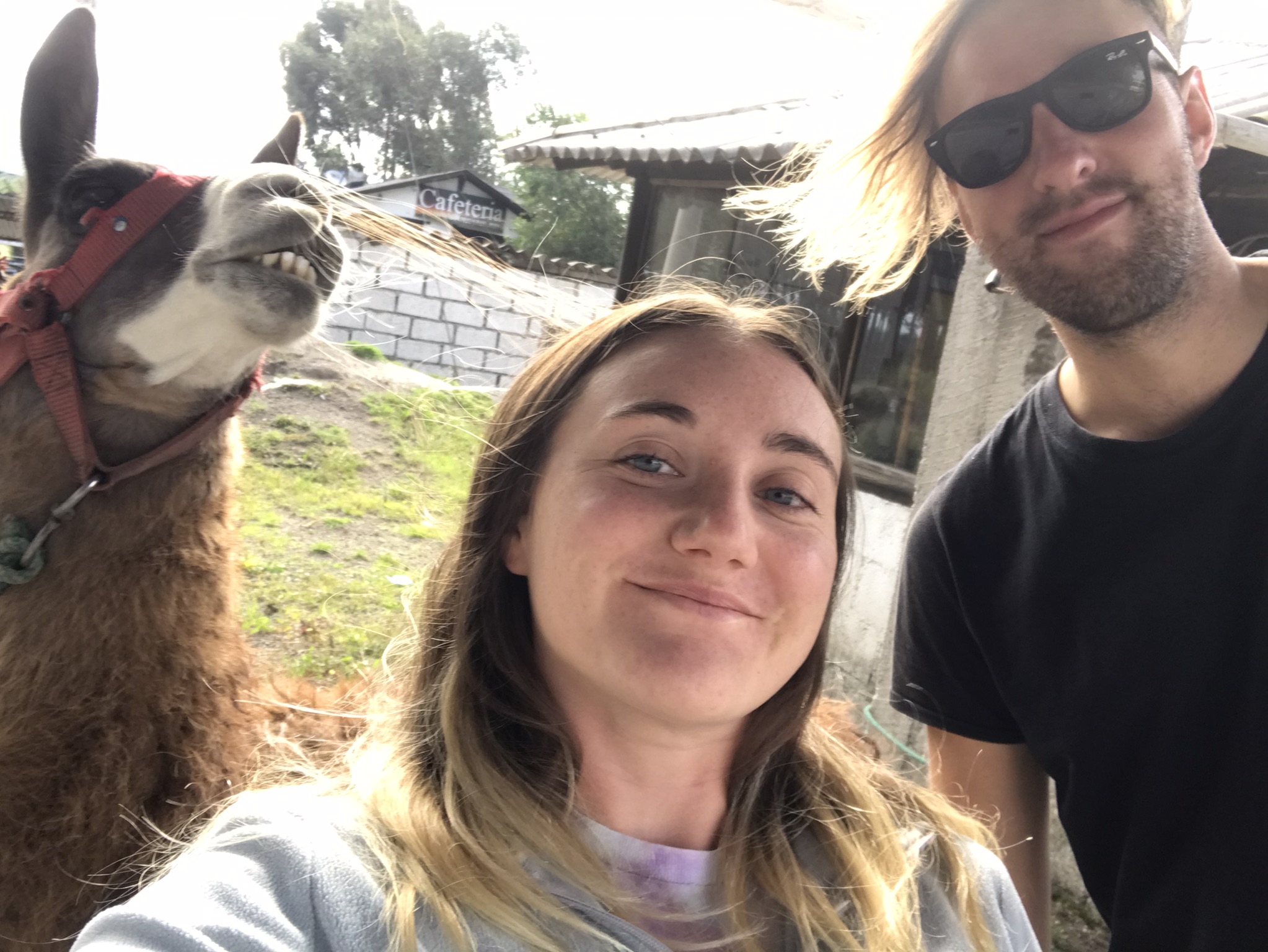Montenegro is home to many wild animals such as bears, wolves and wild pigs. It’s sparsely populated with one third of the country remaining untouched forest. Tourists mainly drift to Montenegro’s 150 miles of coastline on the Adriatic Sea, especially the Venetian citadels at Budva and Kotor, a must in any Montenegro travel itinerary.
Podgorica, Budva, Kotor, Cetinje
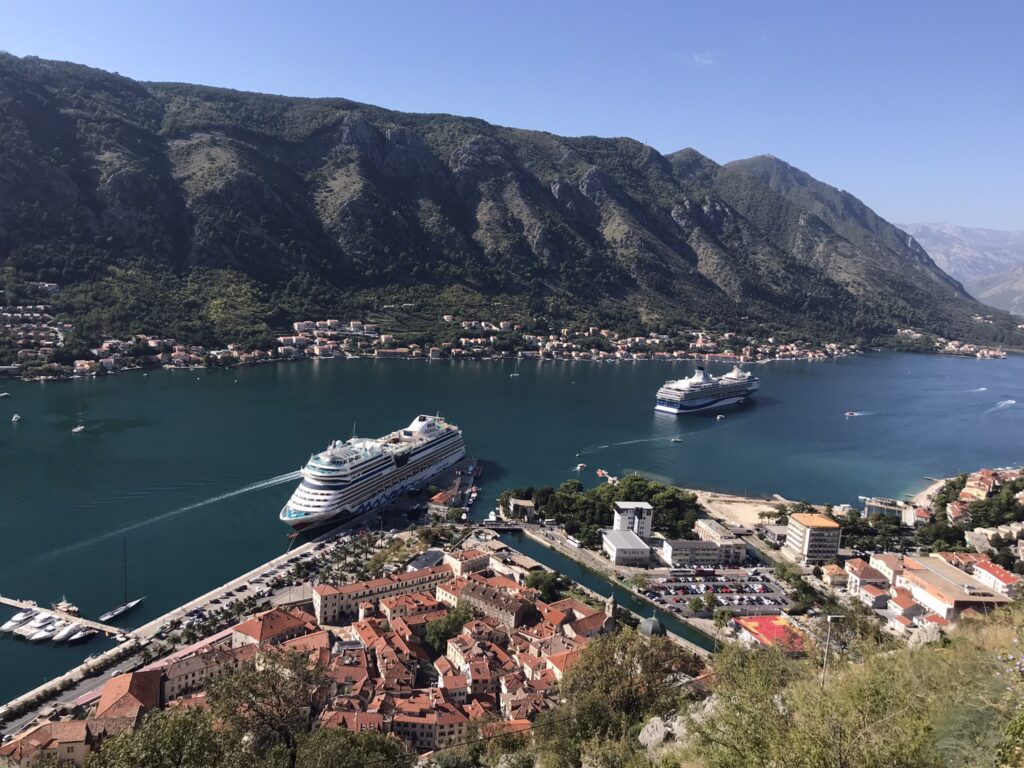
How stunning is the Bay of Kotor!
Budva and Kotor are similar to Dubrovnik in that they’re walled citadels, however whilst Dubrovnik has become overrun by tourists with locals selling up and fleeing the Old Town, it’s still possible to see residents going about their daily life in Budva and Kotor. The walled citadels in Budva and Kotor remain residential areas albeit with an ever growing number of restaurants, cafes and hotels opening their doors. Kotor and Budva have retained some of their authentic spark and resisted the overwhelming lure of tourism which Dubrovnik has fallen prey to.
Podgorica
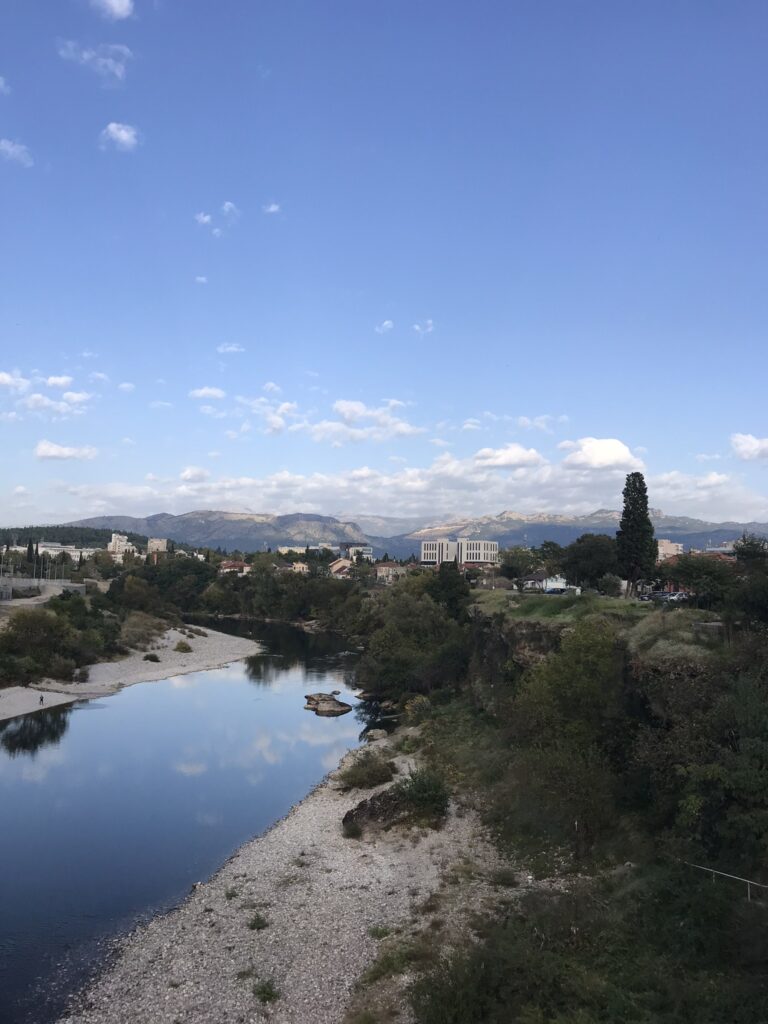
The metropolitan capital of modern Montenegro, Podgorica is a small, compact city that is far removed from the metropolises of Tirana or Sofia. The city lies close to the banks of Lake Skadar (only 30 minutes drive by car), which is shared between Montenegro and Albania. Podgorica is much more affordable than both Budva and Kotor even though it’s the capital city.
Accommodation
An apartment close to King’s Park, this is a good central location from which to explore the city.
Foodie Places
Pizzeria Calabria – more than just a pizza restaurant. Calabria serves amazing breakfasts as well as grilled meat, pizza, pasta, salads and more; we were completely hooked on the breakfast combo: fried eggs, sausage, soft white cheese, pickles, pitta bread and mustard. Whatever the time, whether it’s breakfast or dinner, Calabria is a great place to go to.
Activities
Self-guided walking tour with GPSmycity, stops include: Old Ribnica River Bridge, Depedogen Castle, Millennium Bridge, Clock Tower, Osmanagic Mosque, Starodoganjska Mosque, King’s Park, Independence Square and Petrovic Castle.
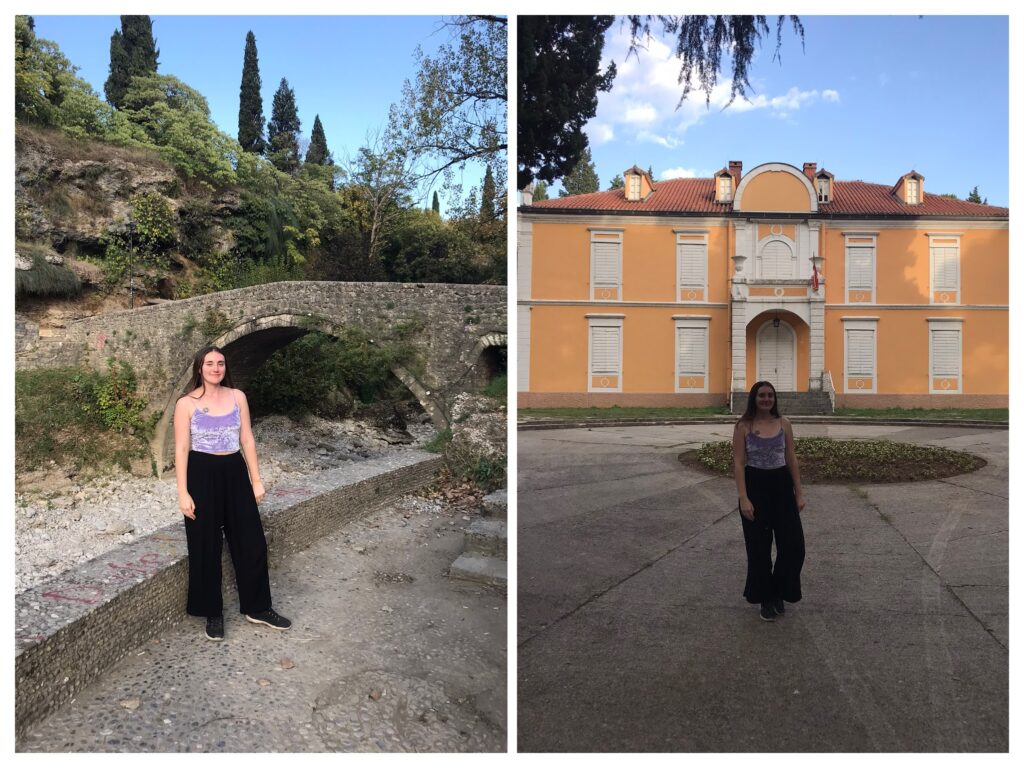
This bright orange mansion was once the winter royal residence of the last King of Montenegro, King Nikola I Petrović-Njegoš, it’s now possible to visit during the summer months as it transforms into an art gallery, when we visited in October it was closed for the winter.
Day trip to Lake Skadar – As the independent travellers we are, we opted to take the train from Podgorica Railway Station, located right next to the main bus station, to Virpazar. This is the station you need to alight to walk to the dock where all the boats leave for Lake Skadar boat trips. The Railway Station in Podgorica was informal to say the least, there weren’t any boards at the station displaying the train times or platform numbers, we queued up at the ticket booth and purchased our tickets only to be told by the station staff that they didn’t know what platform the train would arrive at. Luckily we asked a man who may or may not have been a conductor and he pointed us toward the train that was already in the station. The station in Virpazar is even more informal – there was a station building but no employees. Virpazar station is a short walk from the small town and port, it wasn’t clear which way to go and the main road isn’t safe for pedestrians so we decided to just walk along the train tracks from the station to the docks. In hindsight this was not the best option, we didn’t know about any other routes at the time but we later discovered there’s a path from the port which crosses over the tracks and cuts out most of the precarious train track walk.
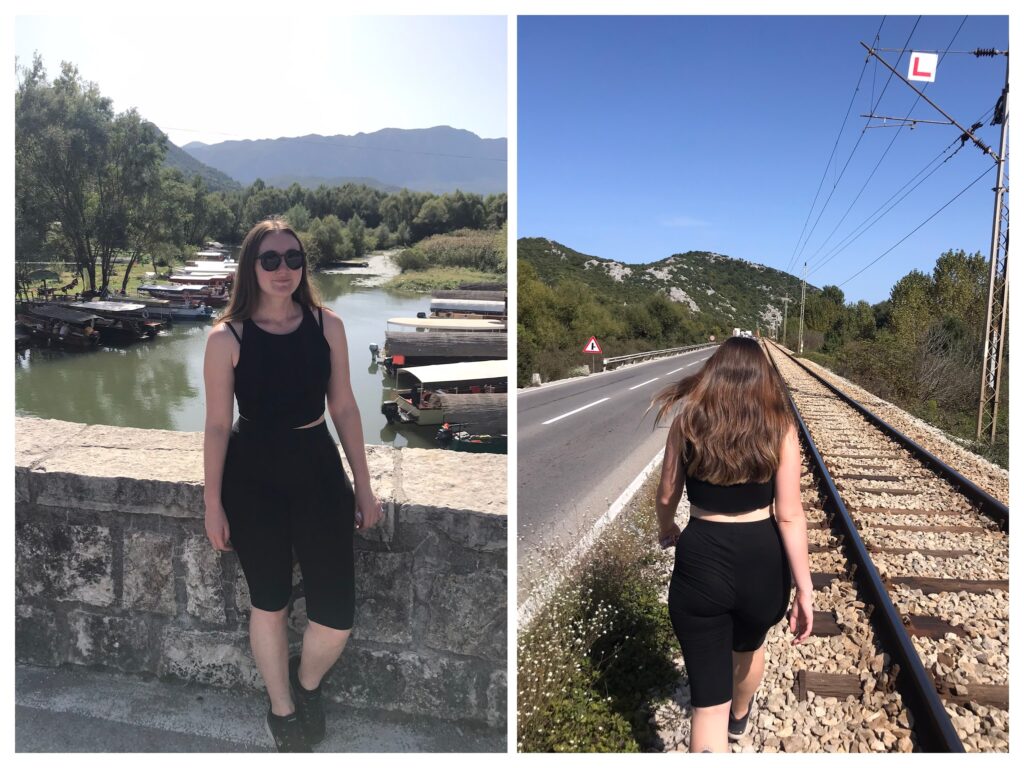
Waiting to board our little boat in Virpazar; keeping an eye out for trains on the treacherous tracks.
In the small town centre of Virpazar there are numerous stalls trying to sell boat trips on Lake Skadar, they aren’t too pushy but be mentally prepared to be gently hassled by the tour operators. From what I can gather, the trips are all pretty much the same but with minor price variations and they depart at different times. It’s best to go for the earliest boat trip so you don’t have to wait around for ages. There are some restaurants and cafes around if you want to grab lunch or a coffee whilst you wait. The boat trip itself was so relaxing that I almost fell asleep, with beautiful views of the nearby hills, vibrant lily pads and native birds on the Lake. If you’re into bird-watching, it’s a must-do activity. We even caught a sneak peak of the lonesome Kom Monastery with only one monk still left residing there. You can book boat trips that stop at Kom Monastery if you have more time and inclination, which we didn’t. The train ride on the way back to Podgorica from Virpazar was incredibly scenic, the train even had individual sliding compartments which was pretty cool. It almost felt like we were on the Hogwarts Express!
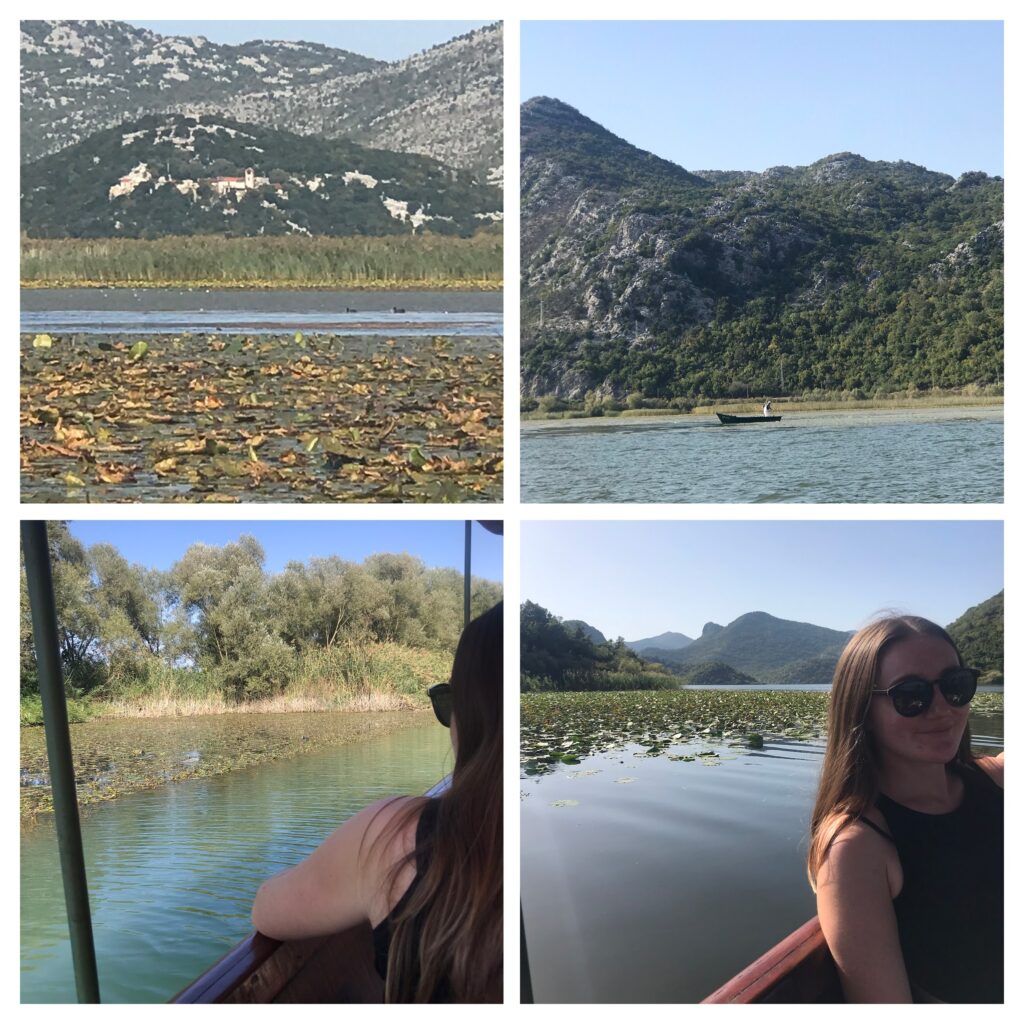
You can just about make out Kom Monastery in the top left photo.
Budva

Budva is at the epicenter of tourism in Montenegro. Tourists flood the historic Stari Grad (walled citadel) in their hordes while others opt for the more relaxed approach and flop down on the nearby Greco Beach or Plaža Ričardova Glava. Budva has something for everyone; a charming marina to stroll along at dusk, immaculate beaches to hang out at during the day and a historic walled city to explore for some cultural immersion. Ambling through the narrow passages of the citadel gives one the feeling of being in a timeless living museum of history. You feel as if you could be walking through a fortified Venetian city in the 16th century or 21st century. Part of the fun of the walled citadel is stumbling upon secret piazzas (squares) and getting lost in the maze of narrow, winding passageways.
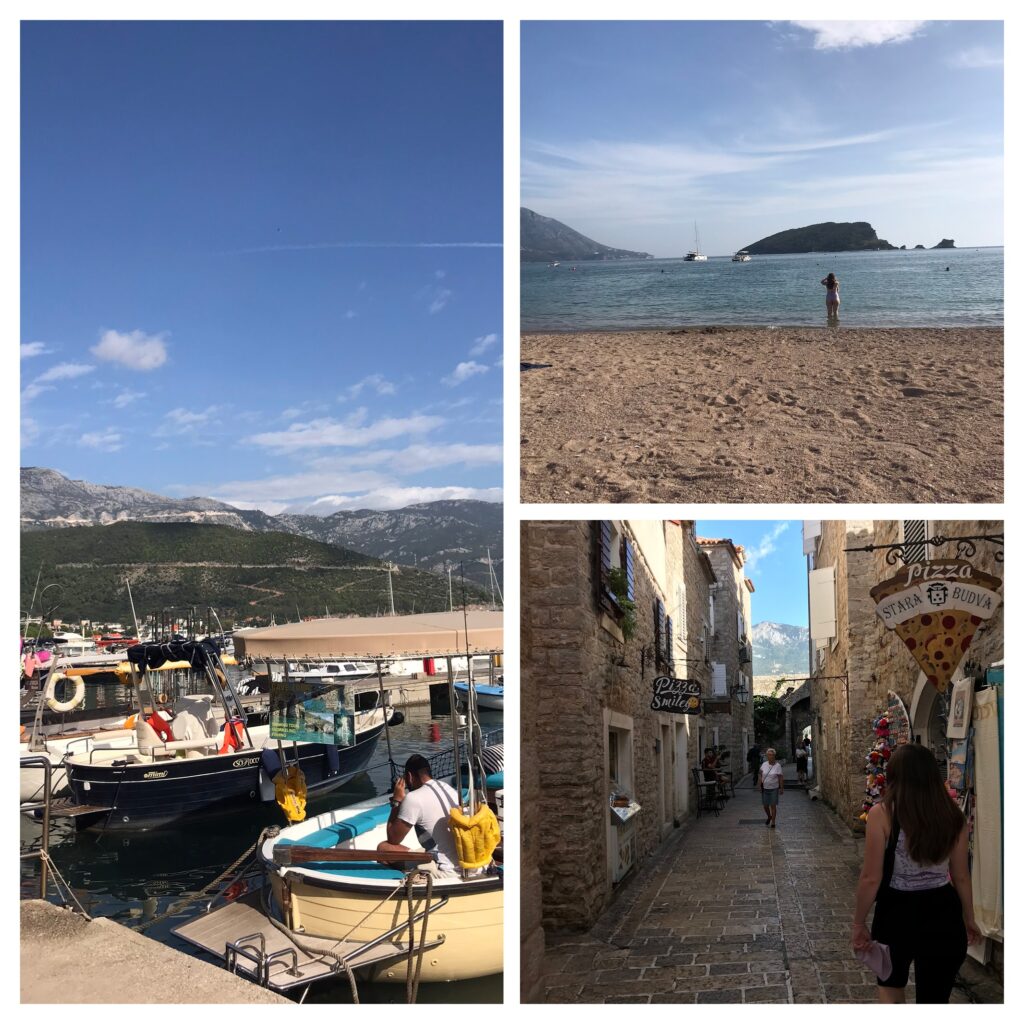
The Venetians controlled Budva, or Budua as they called it, for almost 400 years from 1420 to 1797. They built strong walled fortifications around the city to protect it from potential Ottoman invasion. A catastrophic earthquake in 1979 destroyed many of the significant Venetian dwellings in the walled citadel; extensive restoration efforts were launched in the aftermath of the earthquake. Our walking tour guide showed us that many of the buildings have numbered bricks so that if another earthquake happens, residents can easily reconstruct the buildings brick by brick. You might also notice the metal struts on the facades of the buildings, these were a popular method of stabilising the buildings in the event of another earthquake.
If you’re on a tight budget like us, I would avoid eating in the walled citadel and at the restaurants along Greco Beach, these places definitely have tourist rather than local prices.
Accommodation
Apartments and Rooms Teona – great location close to the walled citadel without the huge price tag of the more luxurious 5* hotels.
Foodie Places
We struggled to find affordable restaurants in Budva but we did stumble upon a couple of cheap takeaway joints.
Soul Food – located just behind Greco Beach, Soul Food is a bakery/cafe and serves up affordable snacks and on-the-go lunches. It has a great selection of pizza slices, sandwiches, baked goods and cakes on offer for half the price of the restaurants on the beach.
Home of Gyros by Naky’s – don’t expect fine-dining here, the best you’ll get is metal benches outside the front of the shop. This place serves up what it says on the tin: Gyros and they’re pretty impressive, both in size (very generous) and flavour. Don’t be put off by the low ratings on Google, our experience here was positive. The staff are very helpful and will happily wrap the gyros up in tin foil if you’d prefer to takeaway.
Activities
Free walking tour in the citadel with Guruwalk, stops included: Church of Sveti Ivan (St. John), Holy Trinity Church (keep an eye out for musicians serenading the streets with sweet music, we saw an impressive guitar player and a mysterious man playing a replica of an old piano nearby) Museum of the City of Budva (some interesting mosaics inside), Poet’s Square, Ruins of Roman-era Necropolis.
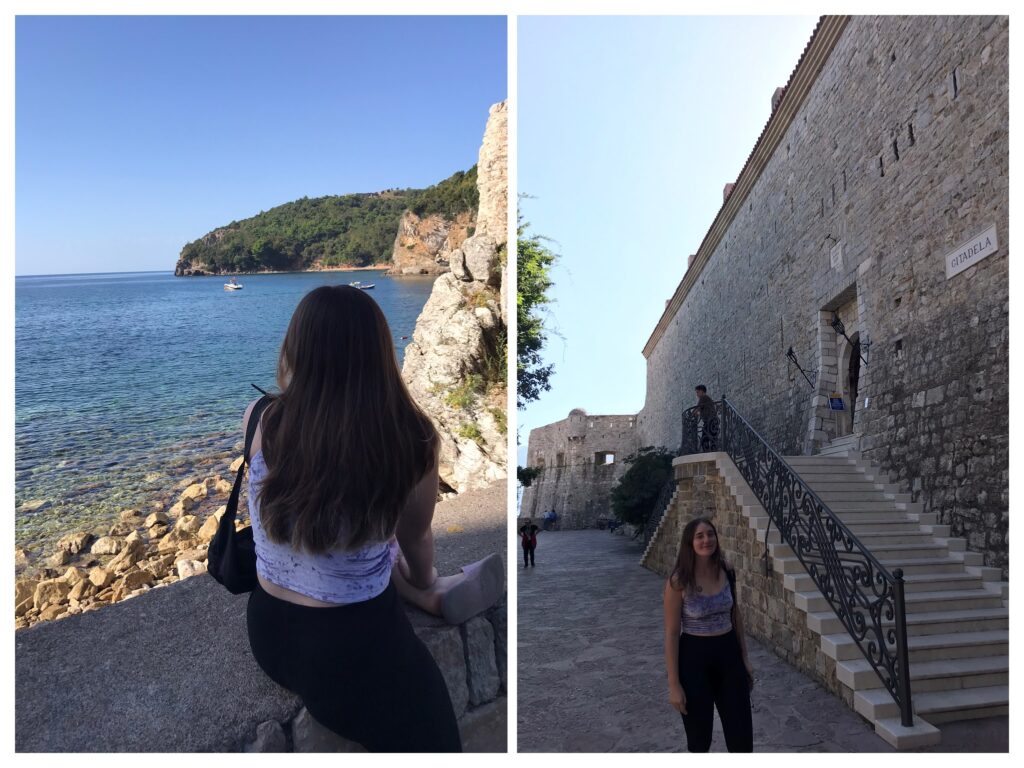
Wondering why walking the city walls is so expensive!
It’s possible to walk the city walls although we chose not to do this as there was an entrance fee.
Greco Beach – this beach is closest to the city centre, ideal for those who don’t want to stray too far from the city centre.
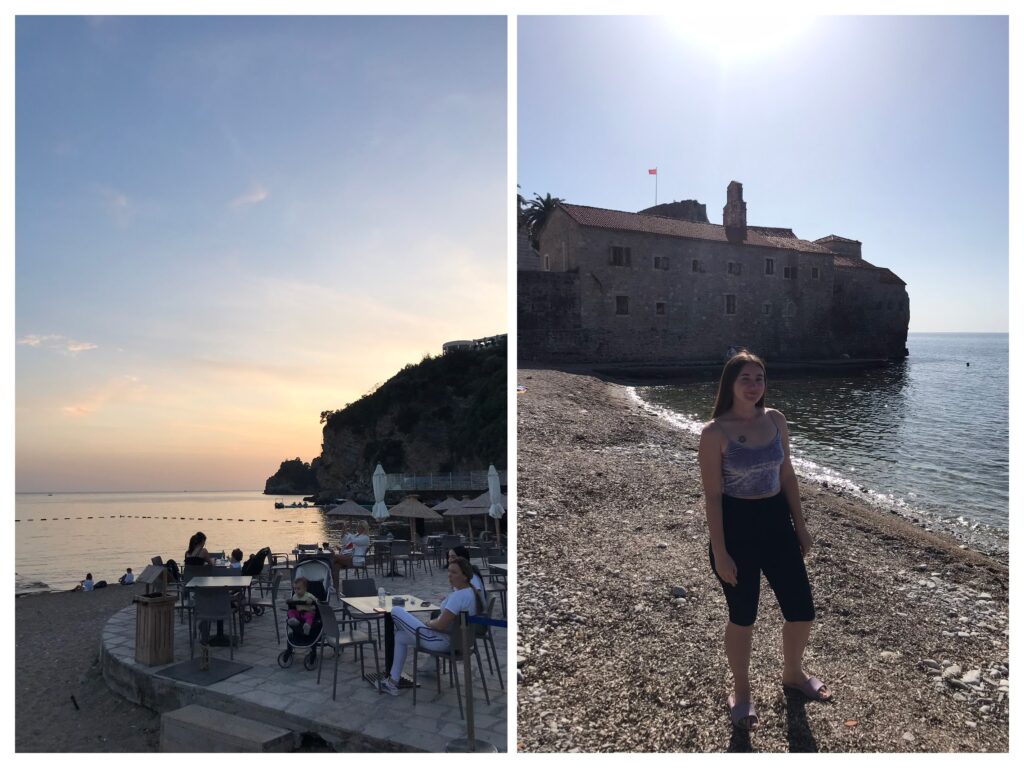
Plaža Ričardova Glava – this beach backs onto the citadel with majestic views of the walled citadel looming over the beach.
Kotor

Kotor, formerly called Cattaro by the Venetians, is nestled in the secluded Bay of Kotor. The fortified Venetian Old Town achieved UNESCO World Heritage status in 2017. Kotor receives a high influx of visitors who come to saunter around the streets of the Old Town and marvel at the historic churches and grand Venetian architecture. Kotor is another cruise ship haven along the Adriatic coast. Prices within the walled citadel are higher than average in Montenegro, I would imagine this is to capitalize on the thousands of tourists who pass through the city on cruises or holidays.
Another important facet to the character of the city is the amount of stray cats who reside there. Since warning the residents of the earthquake in 1979, they have received a revered status within the city. Cats have become a symbol of the city. There’s even a Cat Museum you can visit featuring feline art and photos. Residents take care of the cats by leaving food and water outside their houses. All the cats we saw looked very plump and happy, curled up the city walls or on doorsteps.
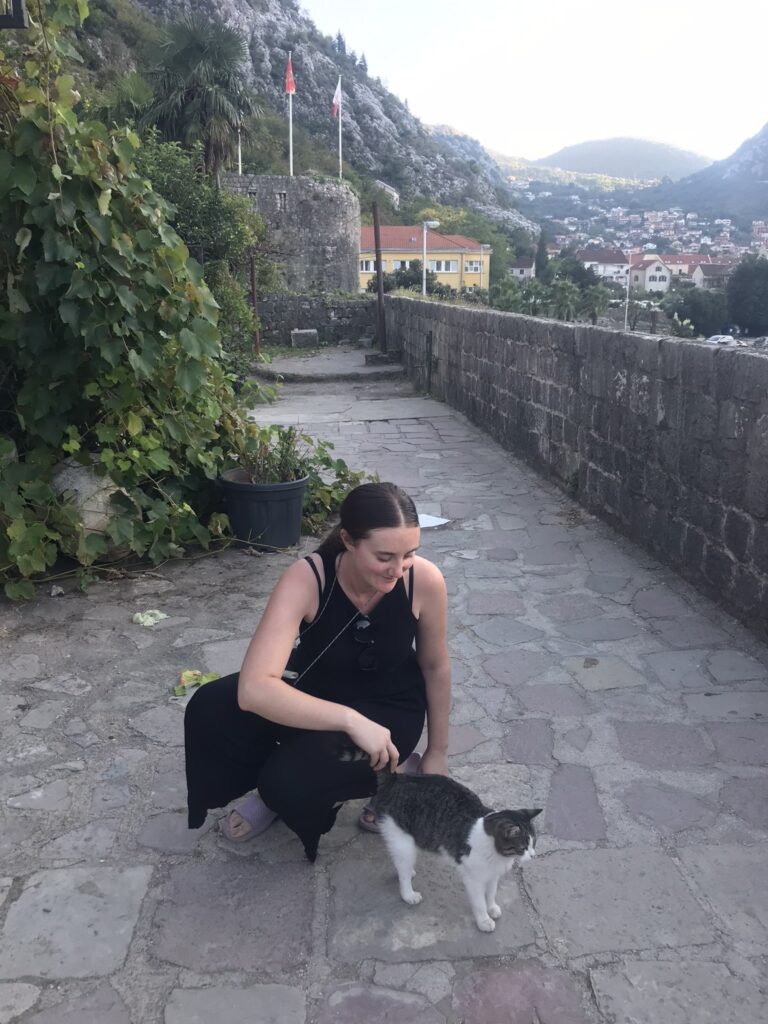
Accommodation
Apartments Moskov – located just outside River Gate (North Gate), this apartment was much cheaper than staying in the walled city. It also came with a fully equipped kitchen which was ideal for cooking our own meals to save money. It’s just around the corner from two supermarkets (Aroma and VOLI) and a bakery (Pekara AS).
Foodie Places
Supermarkets! Kotor is expensive, there are plenty of nice-looking restaurants in the Old Town with not so nice-looking prices. We couldn’t justify the cost of eating out here and so cooked our own food in our apartment. For tourists on a short trip or with an unlimited budget there seemed to be plenty of options.
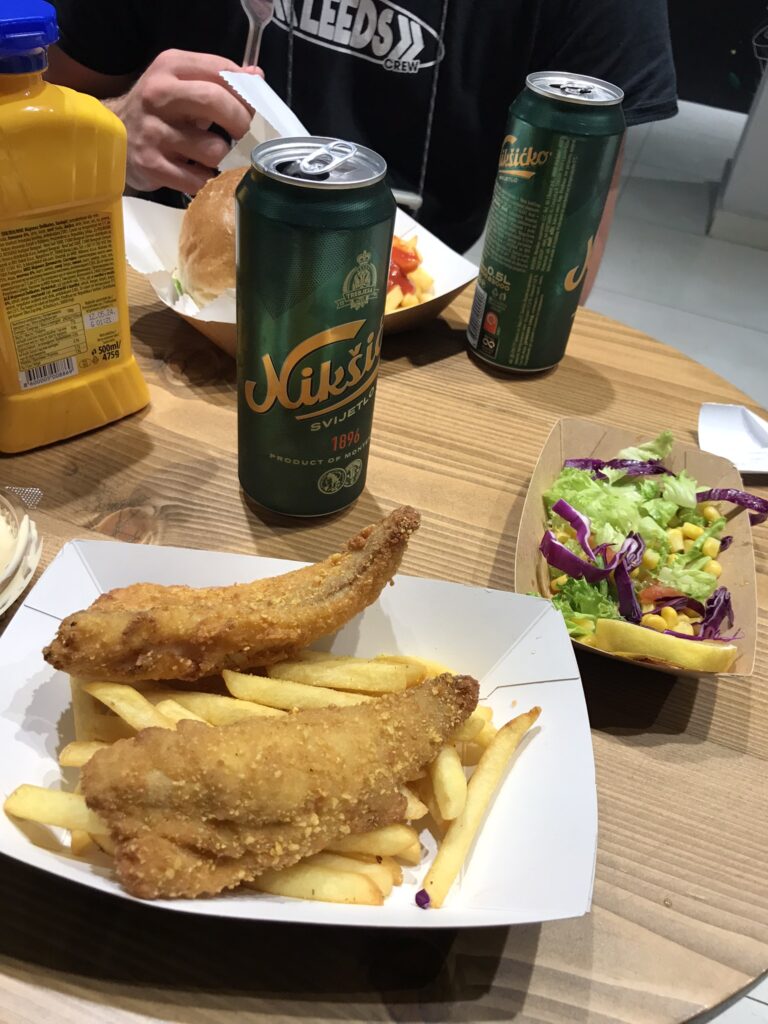
Dobrota Street Food – a cheap fast food joint close to River Gate, the menu is mainly burgers and pizza. The fish and chips were very tasty and came with unlimited mayonnaise (hallelujah)!
Activities
Self-guided walking tour with GPSmycity with stops including: River Gate, Gurdic Gate, Sea Gate, City Walls (free to walk around, just look for the stairs near Sea Gate).
St. Tryphon’s Cathedral, Square of Arms, Clock Tower, Napoleon’s Theatre, Church of St Nicholas & St Luke.
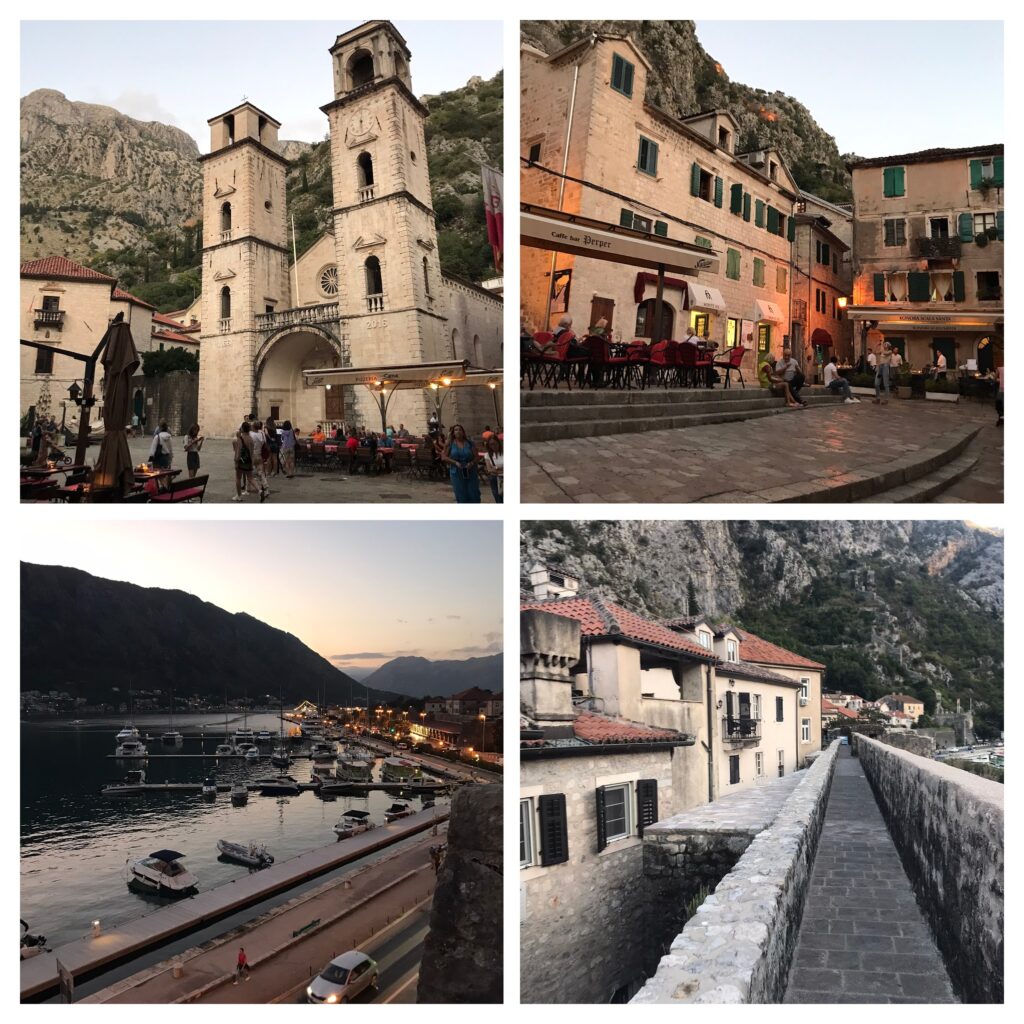
Kotor is great to explore at dusk!
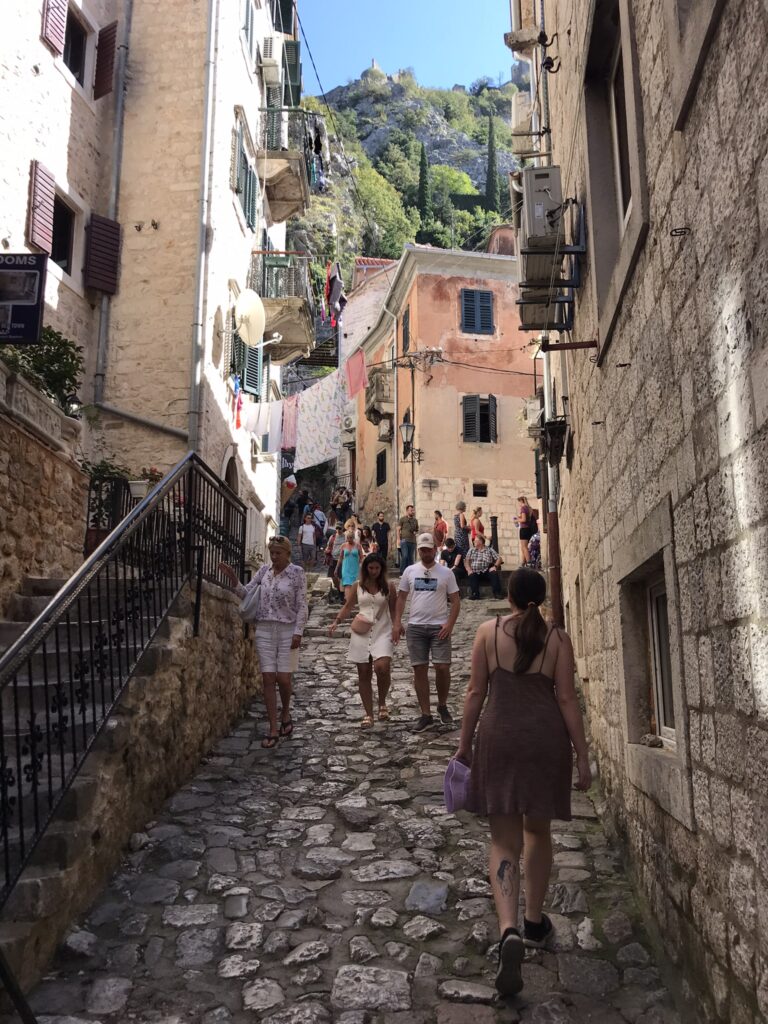
This is just the beginning of the trail to the Fortress – it’s steep!
Fortress – the climb up to the top of the fortress is not for the faint-hearted, we started the uphill crawl at Road to Fort St. Ivan (San Giovanni). Make sure you wear trainers or hiking boots, you’ll thank me later for the tip. I would also recommend bringing enough water for the trek up and back down as the price of water at the top was frighteningly expensive. The stunning views along the way are unbeatable, with fabulous vistas over the Bay of Kotor. Along most of the trail up to the fortress there is a set of narrow stone stairs; however with people climbing both up and down it makes passing others quite tricky as the stairs are too narrow to accommodate two people at once. The other half of the trail path next to the stairs is a rocky, uneven path upwards which is not great if you lose your footing and stumble. We managed the trek without issue, except for a lot of panting, sweating and breaks. If you’ve got limited mobility or find it difficult to walk up stairs, stay well away from this trail.
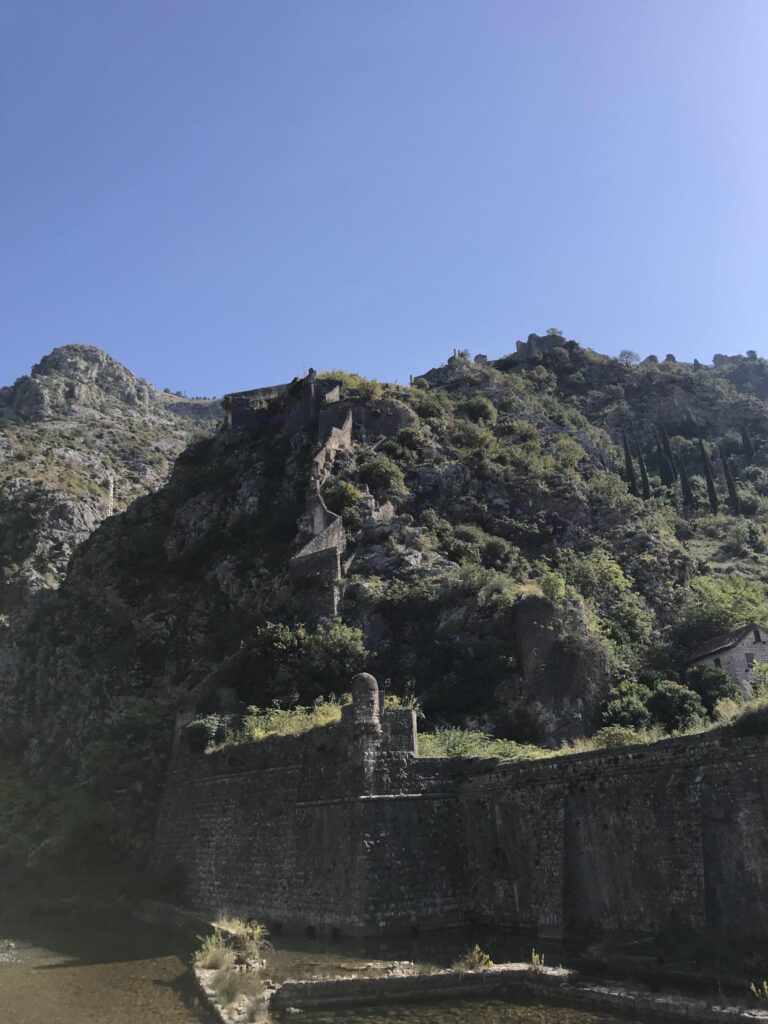
Such a daunting sight when you’re planning on making the trek up to the top of the Fortress in Kotor
Cetinje
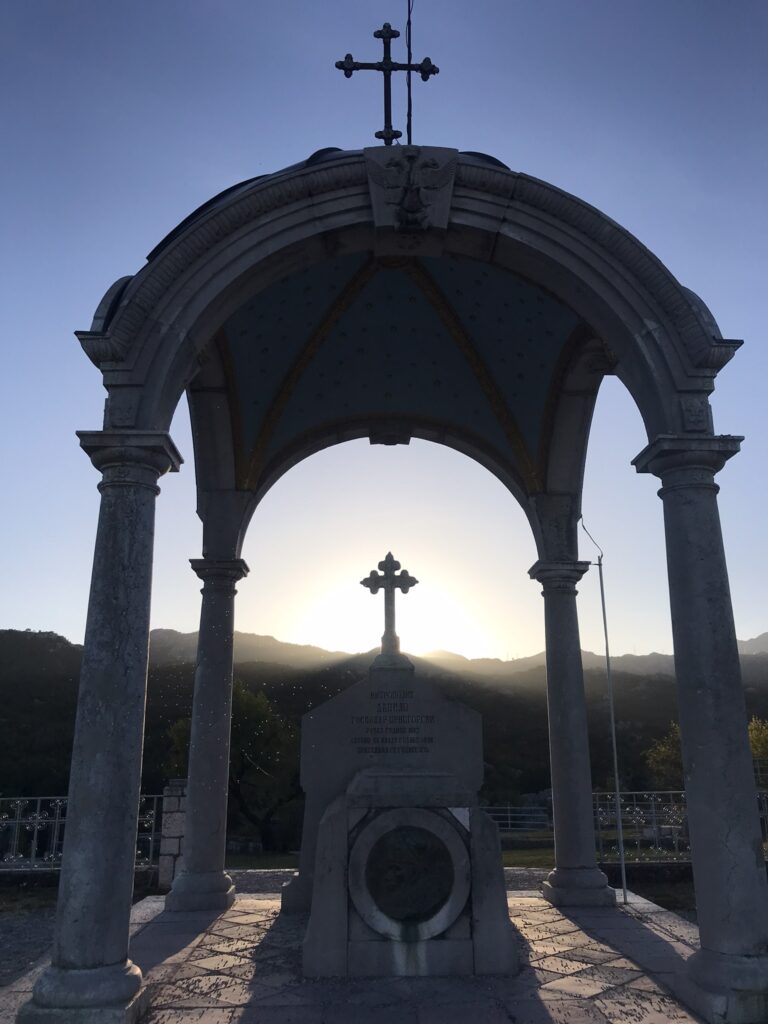
Mausoleum of Prince Bishop Danilo
Cetinje is the old royal capital of Montenegro, with royal residencies like the Billiard Palace and King Nicholas Museum it’s a great place to explore the history of the Montenegrin monarchy. Wandering around the small city you’ll notice many current or former embassies housed in elegant mansions. We opted to visit Cetinje on a day trip from Kotor rather than stay overnight. It’s actually much easier to reach Cetinje from Budva or Podgorica rather than Kotor, as the bus between these two places passes through Cetinje while the bus from Kotor has to retrace its route past Budva before heading onto Cetinje, making the journey longer than expected.
Foodie Places
Kole – a decent restaurant to enjoy lunch or dinner at.
Activities
There are many museums and emblematic buildings in Cetinje, we weren’t able to visit them all in a day but we were able to see the following:
Ethnographic Museum of Montenegro – this museum contains displays more focused on social history such as musical instruments, traditional costumes and weaponry.
Cetinje Monastery – an Orthodox Monastery built in the 18th century which houses sacred relics.
Billiard Palace – in close proximity to the monastery, this royal residence was so named because of the Bishop Prince’s proclivity for playing pool.
King Nicholas Museum – former residence of King Nicholas and the royal family, the mansion is now a museum with information on the use of the various rooms and various items belonging to the royal family.
Castle Church – a stop on the way to the Mausoleum of Bishop Danilo.
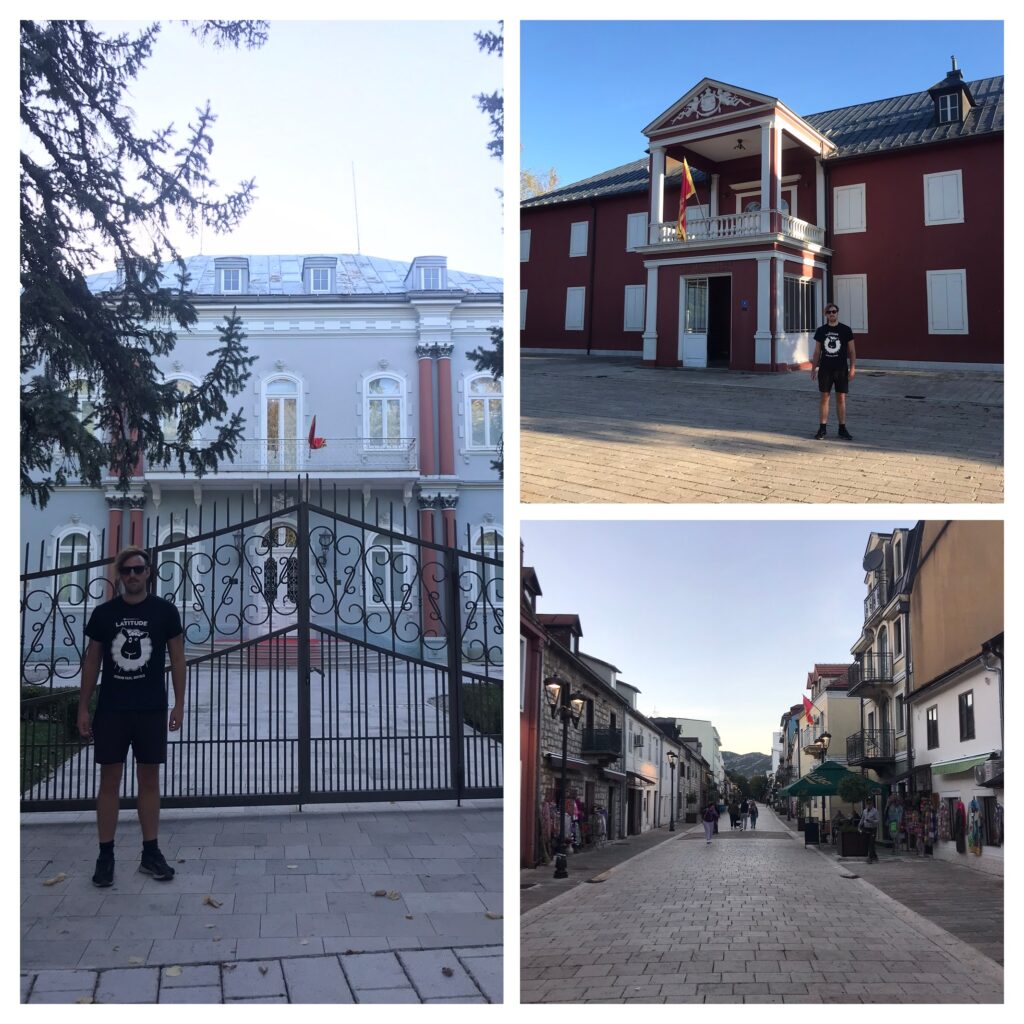
A sneak peek of the architecture in Cetinje
Music Academy – formerly the British Embassy building which you can admire from the outside
Blue Palace – formal residence of the President of Montenegro – of course this is not open to the public and you can only look from the outside.
Mausoleum of Bishop Danilo – a short 15 minute trek to the top, the ascent is quite gradual which makes for a nice walk. The view from the mausoleum is great with sweeping views over Cetinje and the surrounding valley.
